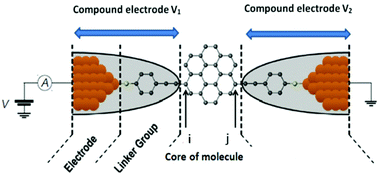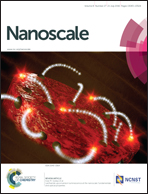Exploring quantum interference in heteroatom-substituted graphene-like molecules†
Abstract
If design principles for controlling quantum interference in single molecules could be elucidated and verified, then this will lay the foundations for exploiting such effects in nanoscale devices and thin-film materials. When the core of a graphene-like polyaromatic hydrocarbon (PAH) is weakly coupled to external electrodes by atoms i and j, the single-molecule electrical conductance σij depends on the choice of connecting atoms i,j. Furthermore, provided the Fermi energy is located between the HOMO and LUMO, conductance ratios σij/σlm corresponding to different connectivities i,j and l,m are determined by quantum interference within the PAH core. In this paper, we examine how such conductance ratios change when one of the carbon atoms within the ‘parent’ PAH core is replaced by a heteroatom to yield a ‘daughter’ molecule. For bipartite parental cores, in which odd-numbered sites are connected to even-numbered sites only, the effect of heteroatom substitution onto an odd-numbered site is summarized by the following qualitative rules: (a) when i and j are odd, both parent and daughter have low conductances, (b) when i is odd and j is even, or vice versa both parent and daughter have high conductances and (c) when i,j are both even, the parent has a low conductance and the daughter a high conductance. These rules are verified by comparison with density-functional calculations on naphthalene, anthracene, pyrene and anthanthrene cores connected via two different anchor groups to gold electrodes.



 Please wait while we load your content...
Please wait while we load your content...